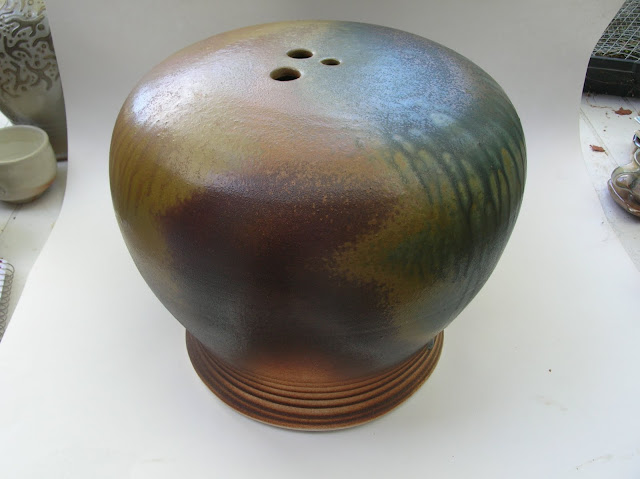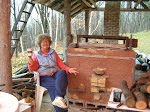primary air holes in the lid making the characteristic chugging sound - definitely a sign of reduction.
This time I had lots of reduction in the top half and it seemed to be along the whole length - though it varied, just like the flame signs were one directional. The Shaner oribe turned red, the VCAA green turned a purplish.
I had made two small appliqued vases to test out how they would react to the flames and to the soda.
In the wood only section I had used the watercolour green to highlight the applique then rubbed off and gave it a light spray with bone ash glaze. The bone ash did not react well with the ash - going a grey colour and a sugary white where hit directly.
In the soda section the pot had Dan Hill's slips - blue, blue green and rutile, with a light spray of Hanna blue ash on the right upper side. The back had some nice blushing.
 |
| Jar from throat arch - lid no longer fits as it had sealed with ash when it got knocked sideways. |
The flat topped orb - had some nice flashing and crystal development on the top - so the slow cooling helped. It was on the bottom just behind the throat arch. It had Aerni colour active blue and brown slips and then glazed with Hanna blue and ochre fake ash glazes with over sprays of rut/GB and Ti/GB.
The tall bottles were side by side at angles to each other. The Hanna ochre ash glazed one had a bit too much olive green colour where it was hit with a lot of ash. The other one was glazes with mal Davis shino - but was too thin - as no carbon trapping. However the colours were a very warm orange an reds. Not very professional photos as I did them outside and did not have a large enough back drop.









































